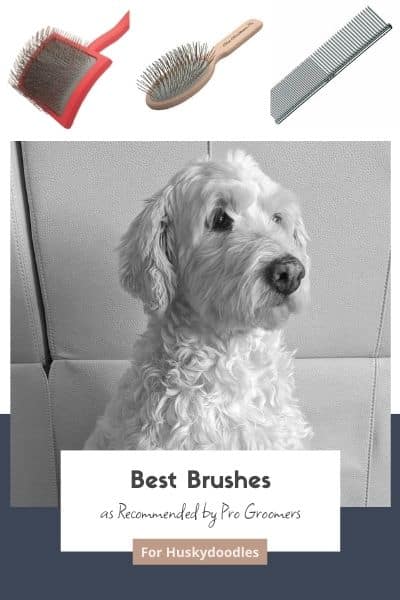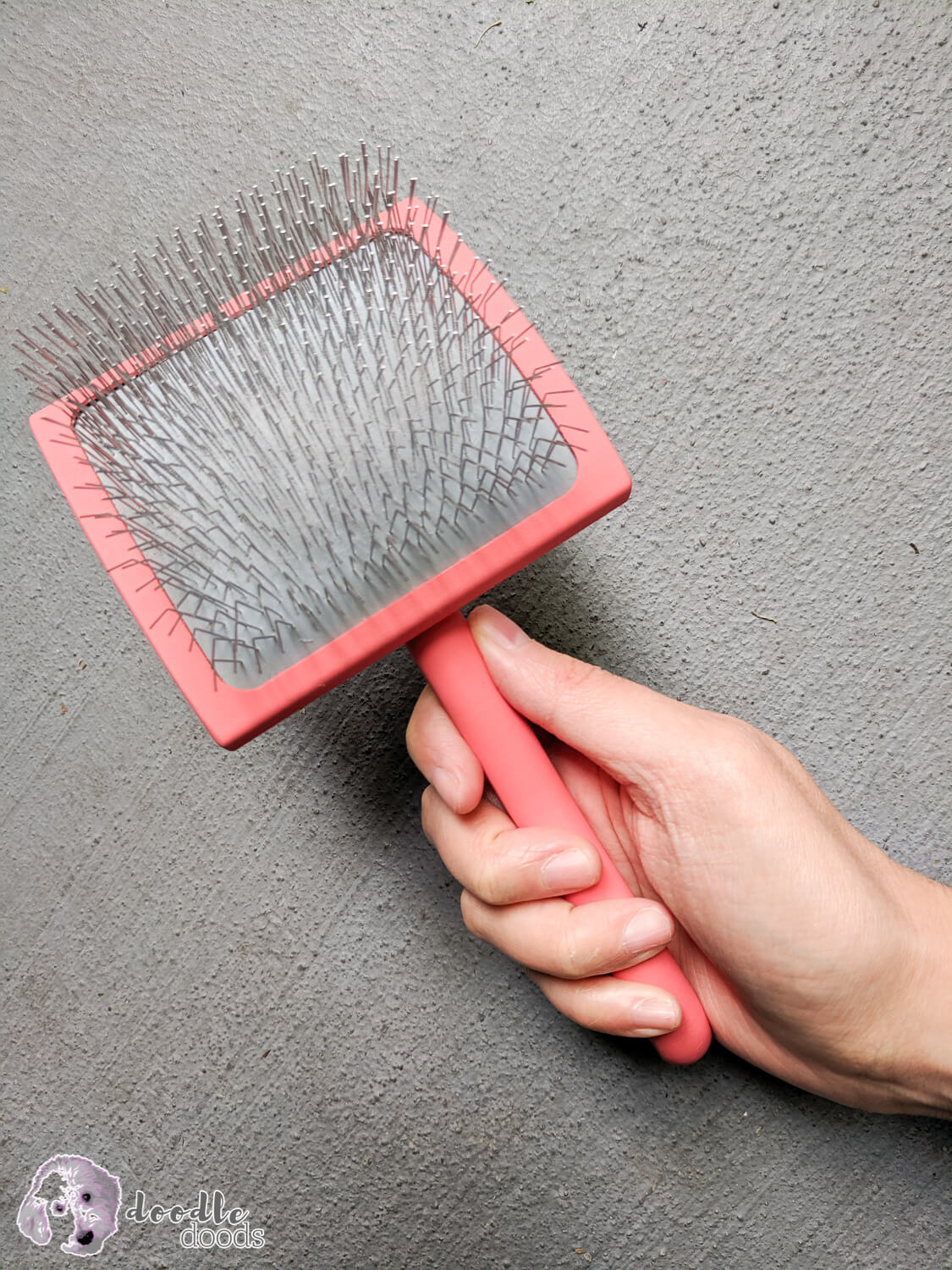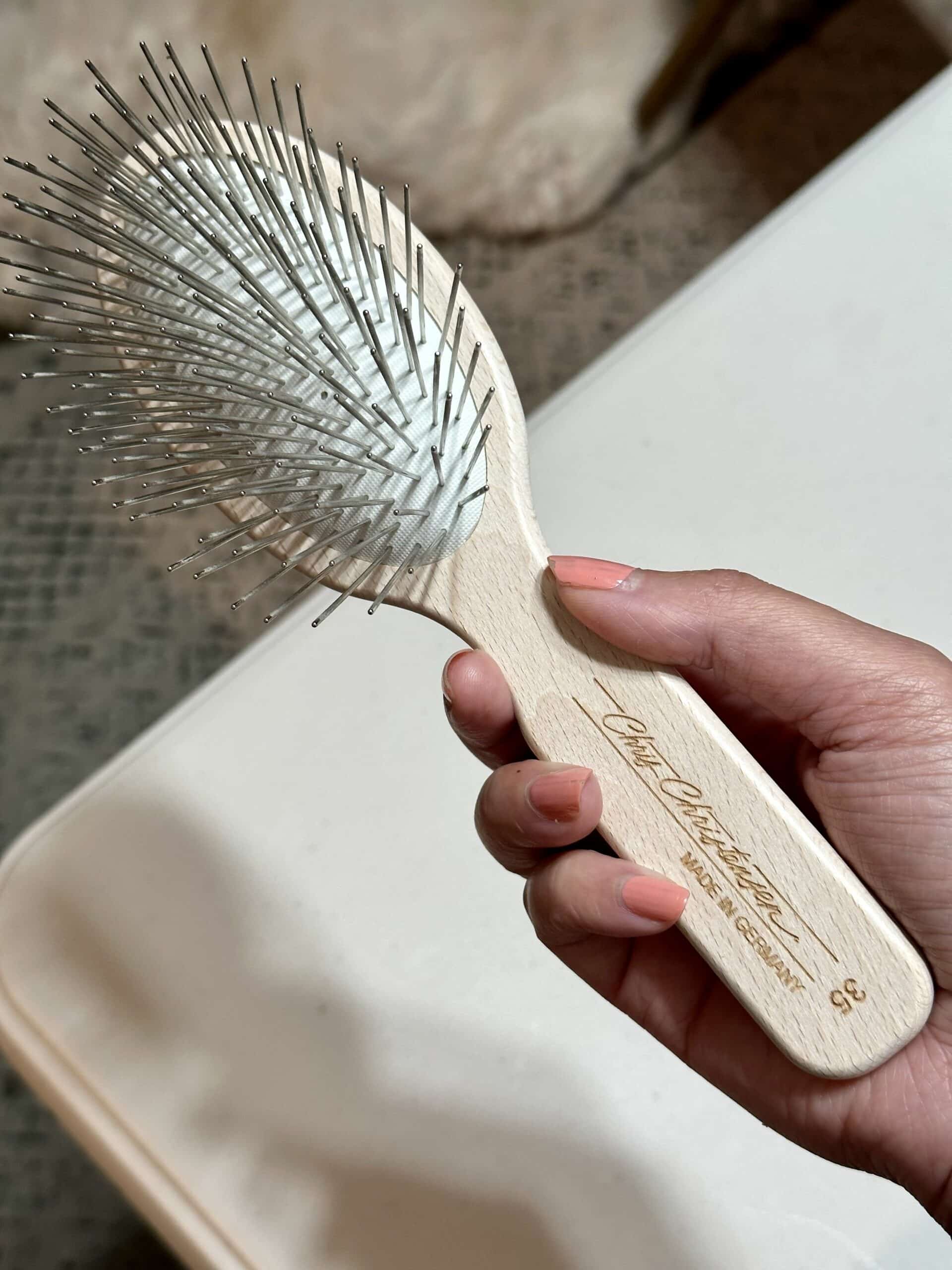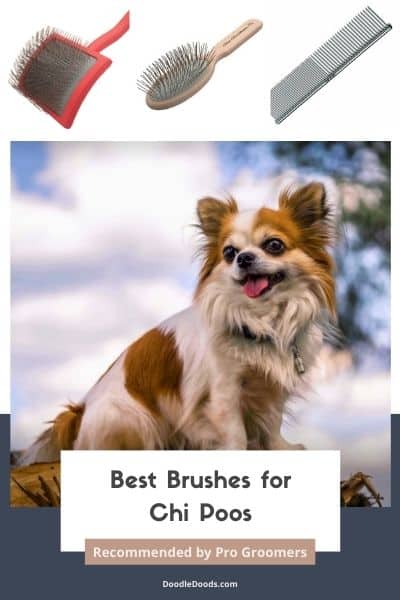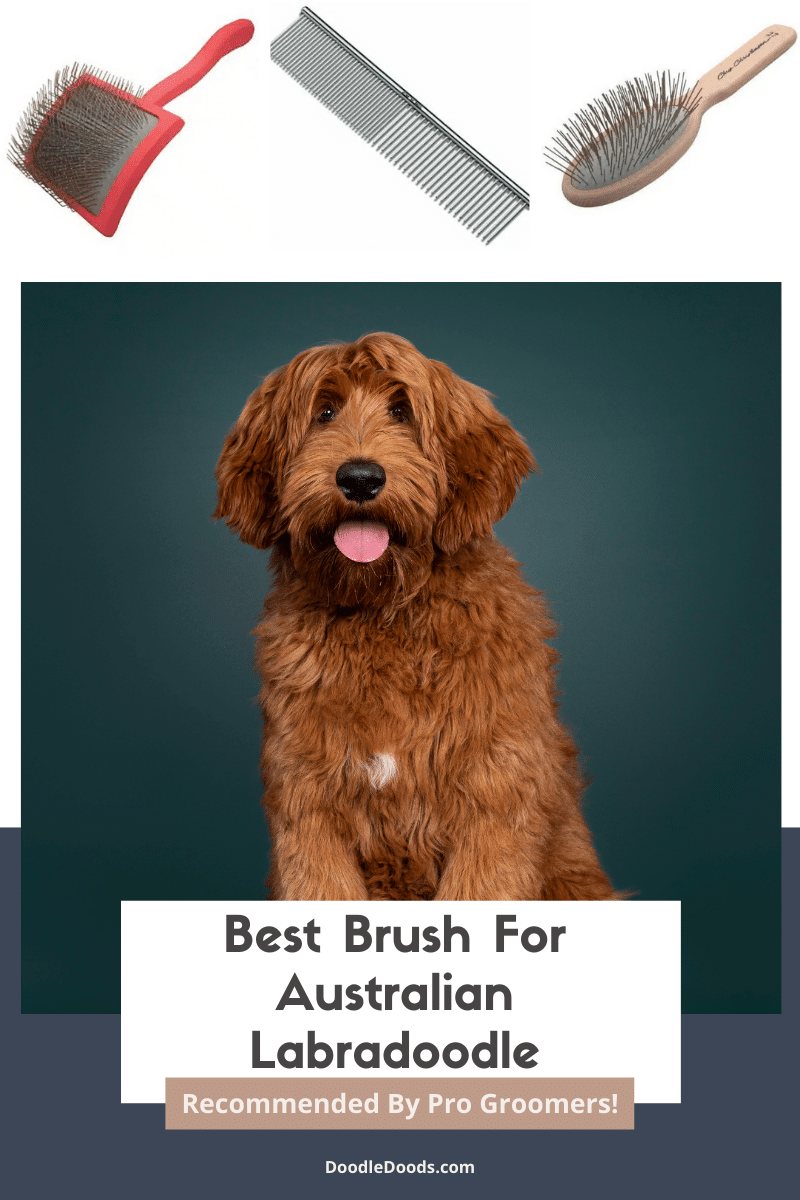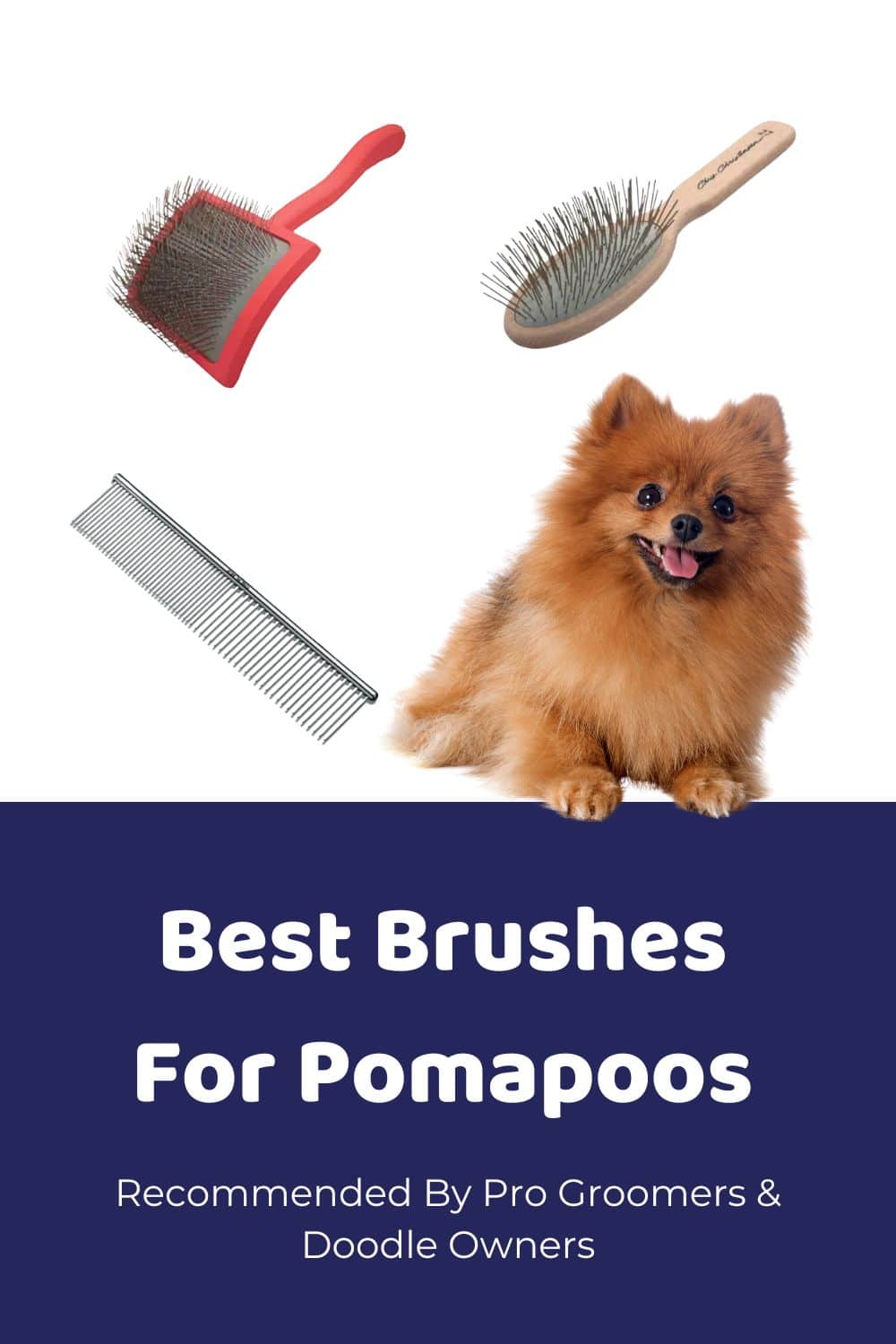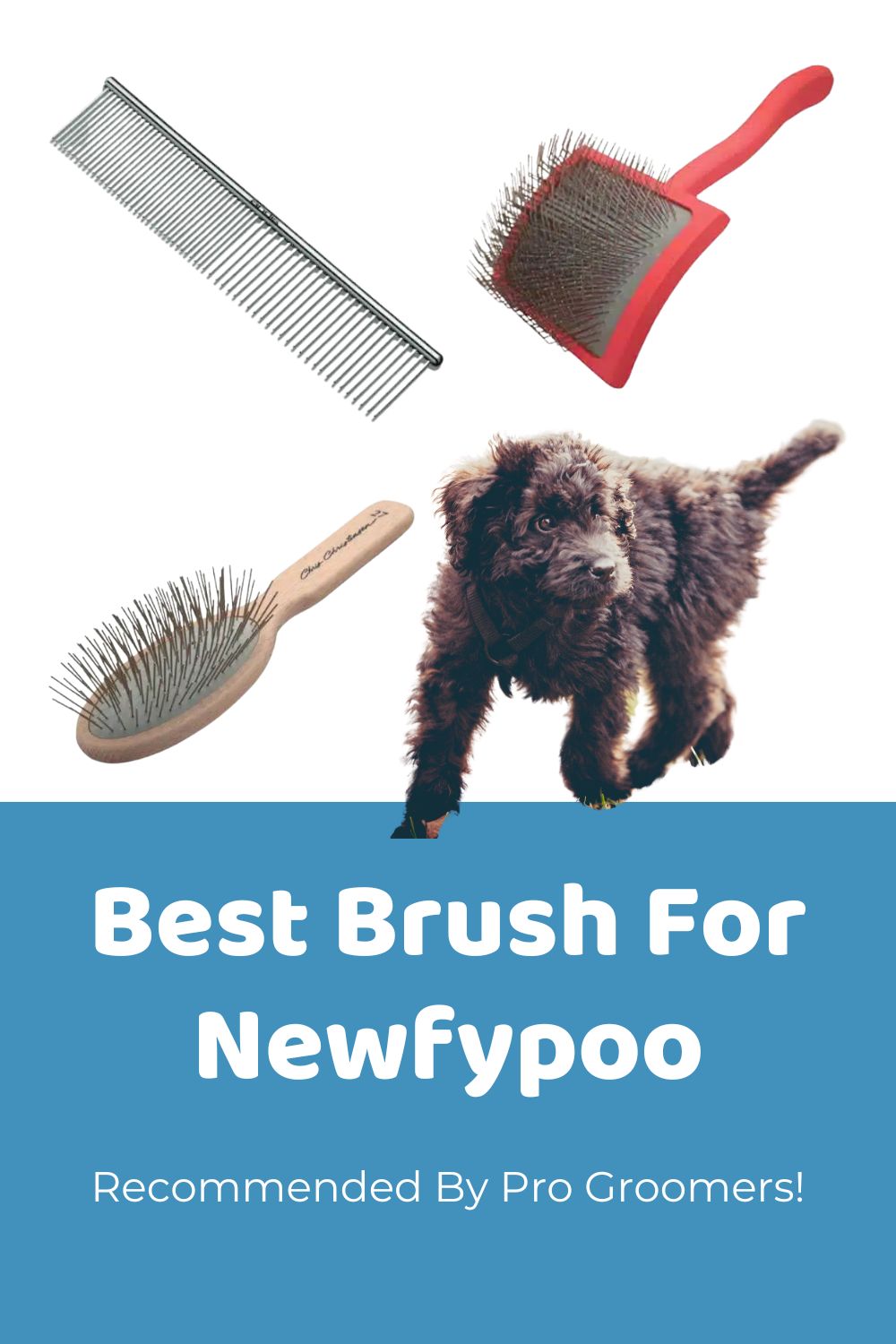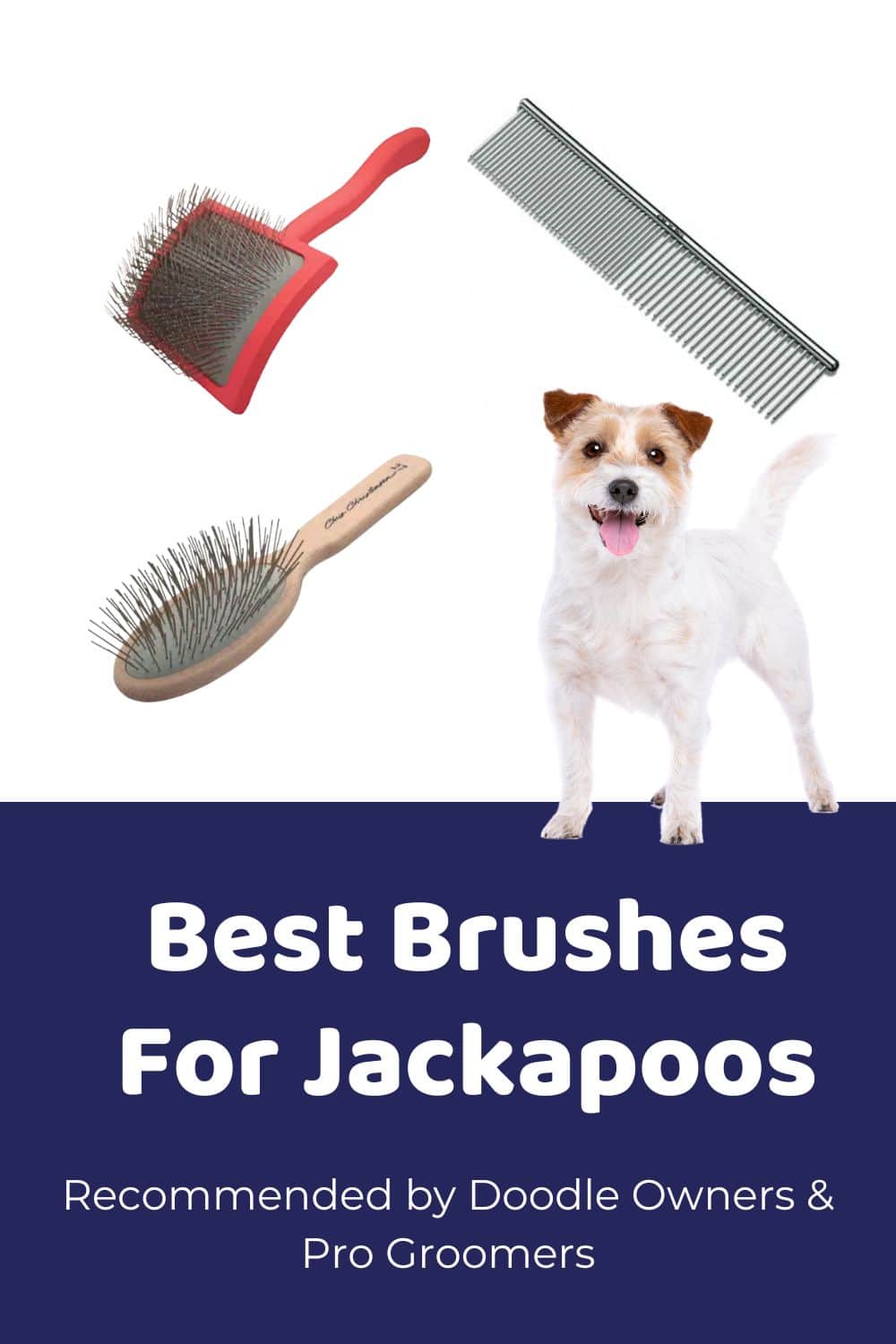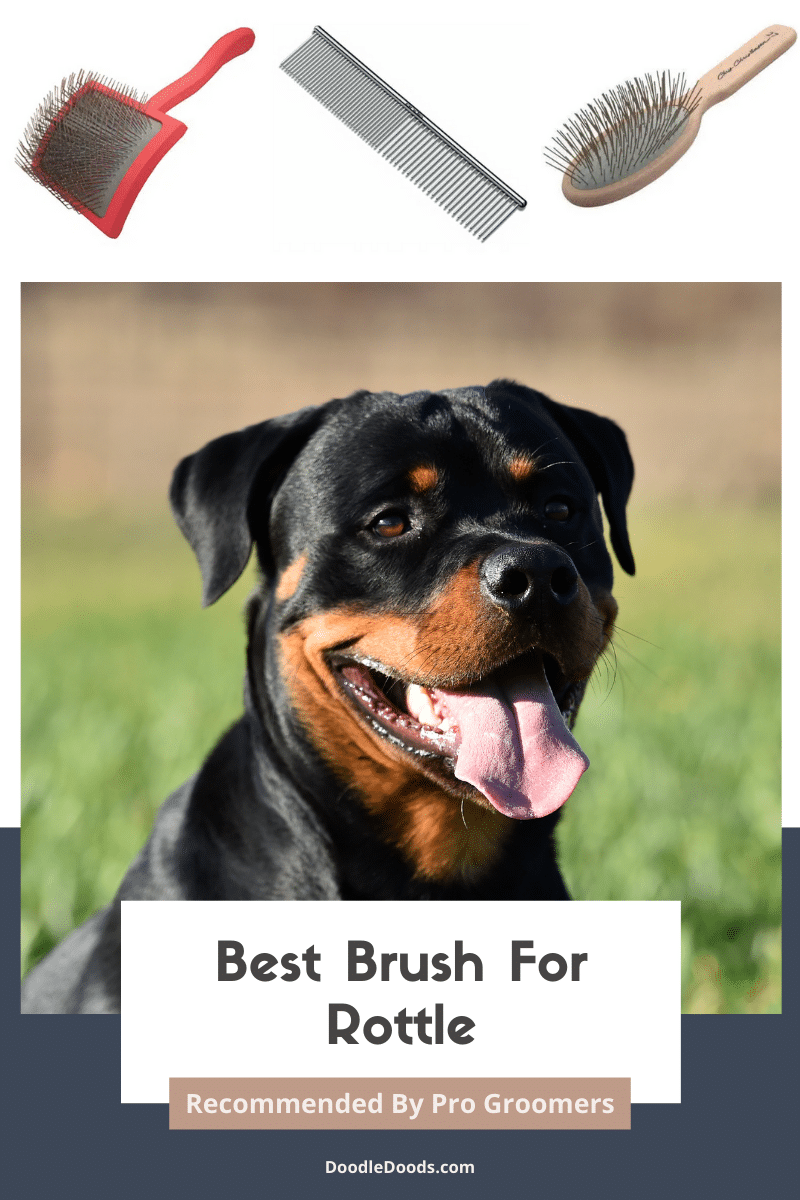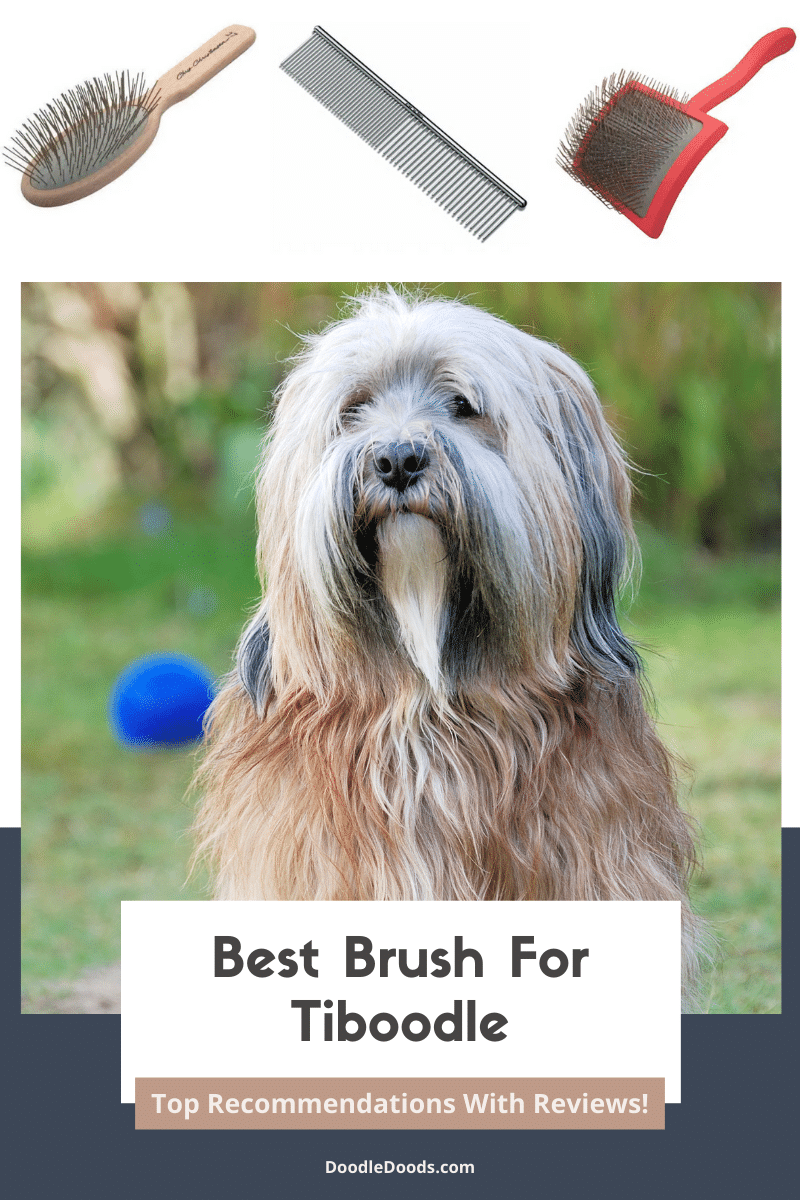When it comes to finding the best brush for Huskydoodles, there are a few things you need to take into account. In this article, we’ll discuss the different types of dog brushes available and explain why choosing the right one can make a big difference in terms of keeping your dog’s coat healthy and free from mats. By the way, we’ve also listed here the absolute best dog brushes that work wonders on the demanding Huskydoodle coat. Keep on reading to find out more!
Table of Contents
- Types Of Popular Huskydoodle Brushes
- What Is The Best Brush For Huskydoodles?
- Best Brush For Huskydoodles: Reviews With Pros & Cons
- Best Brush For Huskydoodles: Honorable Mentions
- How Choosing The Correct Brush For Your Huskydoodle Can Help Prevent Matting
- How Often Do You Have To Groom A Huskydoodle?
- How To Brush A Huskydoodle Properly
- Best Brush For Huskydoodles: Frequently Asked Questions
- Best Brush For Huskydoodles: Final Thoughts
Types Of Popular Huskydoodle Brushes
The Siberian Husky Poodle mix may not be as well-known as some other Poodle mixes, such as the Goldendoodle or Labradoodle, but they’re every bit as gorgeous and amazing pets. Not to mention, their Poodle genes give them a great advantage over their purebred Husky parents. Namely, the hypoallergenic and low-shedding coats.
But although their low shed properties certainly make Huskydoodles very desirable pets, especially if you cannot adopt a purebred Husky due to their high levels of shedding, they do come with the added responsibility of regular grooming. And that’s where dog brushes come in!
There are several different types of brushes available for dogs, but the two most common ones used on Huskydoodles are slicker brushes and pin brushes. When it comes down to choosing the best brush for Huskydoodles, it’s vital you know the pros and cons of each:
Slicker Brush
Slicker brushes get their name from the bristles which are “slick” in the sense that they easily slide through the coat to remove any dirt, debris, or mats. These brushes feature fine metal bristles designed to help remove loose hair and debris from the coat while also preventing matting.

These brushes are ideal for dogs with a thick, double coat, as they can help to prevent mats from forming and remove any existing tangles. The perfect option for thick-coated Huskydoods! Slicker brushes are also excellent in removing dead hair, which can be an issue if your Dood has inherited an undercoat from its purebred Husky parent.
All in all, a slicker brush can very well keep your dog’s coat healthy and shiny. Just make sure to choose a slicker brush that’s appropriately sized in comparison to your Dood’s size, and has pins that are long enough to penetrate through all depths of the fur.
Pin Brush
Pin brushes are the second most common type of dog brush used on Huskydoodles. They feature longer, round-tipped pins made from metal, plastic, or bamboo, designed to distribute natural oils throughout the coat, as well as remove dirt and tangles.
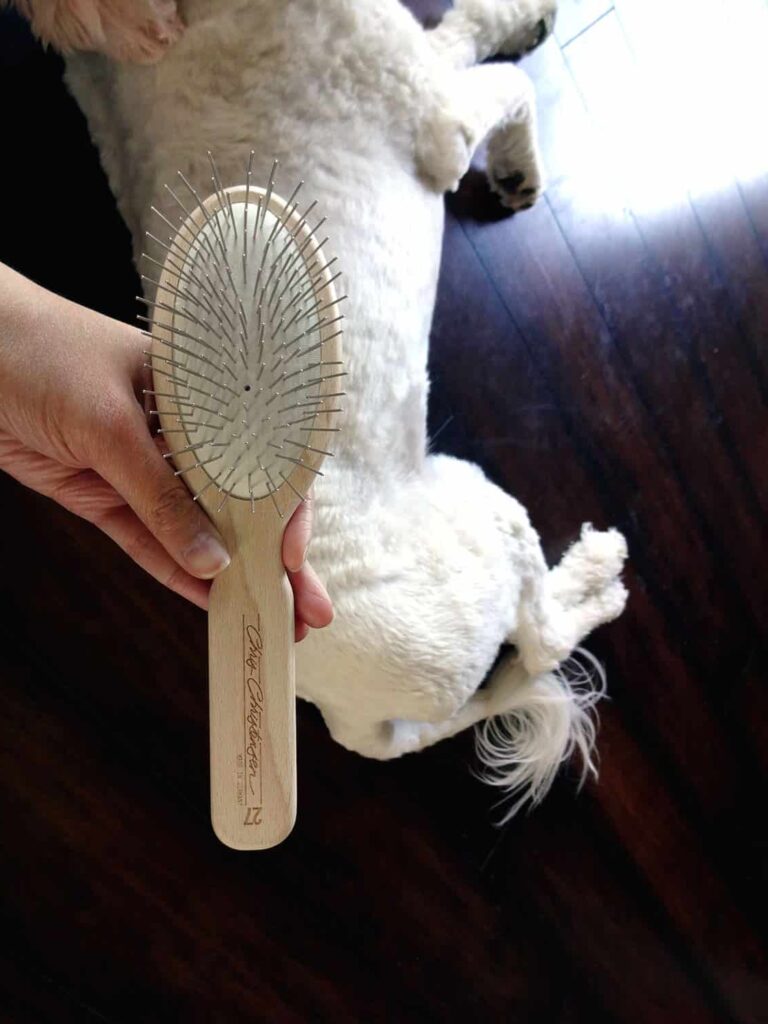
Pin brushes are great because they help remove dirt and tangles, which helps prevent mats from forming. Not only does this prevent matting, it’ll also keep your dog cleaner for much longer. Therefore, you won’t have to bathe them as often, as they simply won’t get as dirty.
Another great thing about pin brushes (or any dog brush for that matter) is that they distribute natural oils throughout the coat. Why is that important? Firstly, your dog’s natural skin oils nourish the coat, making the hair healthy and strong. Secondly, your Dood will have a lustrous shine all the time.
Pin brushes are a good choice for Huskydoodles with medium to thick coats who need a brush that can penetrate deep into the coat to remove any dirt or debris. Although a pin brush is a great all rounder, it may not be as effective on very tangle-prone coats that require heavy-duty grooming tools.
Essential: Metal Comb
You cannot go wrong with a good quality metal or steel comb! Regardless of your Dood’s coat type, this is an absolutely must have grooming tool for every single Huskydoodle. But why is that?
First of all, combs are great for detangling mats and removing knots without damaging the fur. In addition to that, a comb can reach areas that you wouldn’t be able to properly brush with a pin or slicker brush. If you’re working on the face or paws, a brush won’t be nearly as effective than a comb.
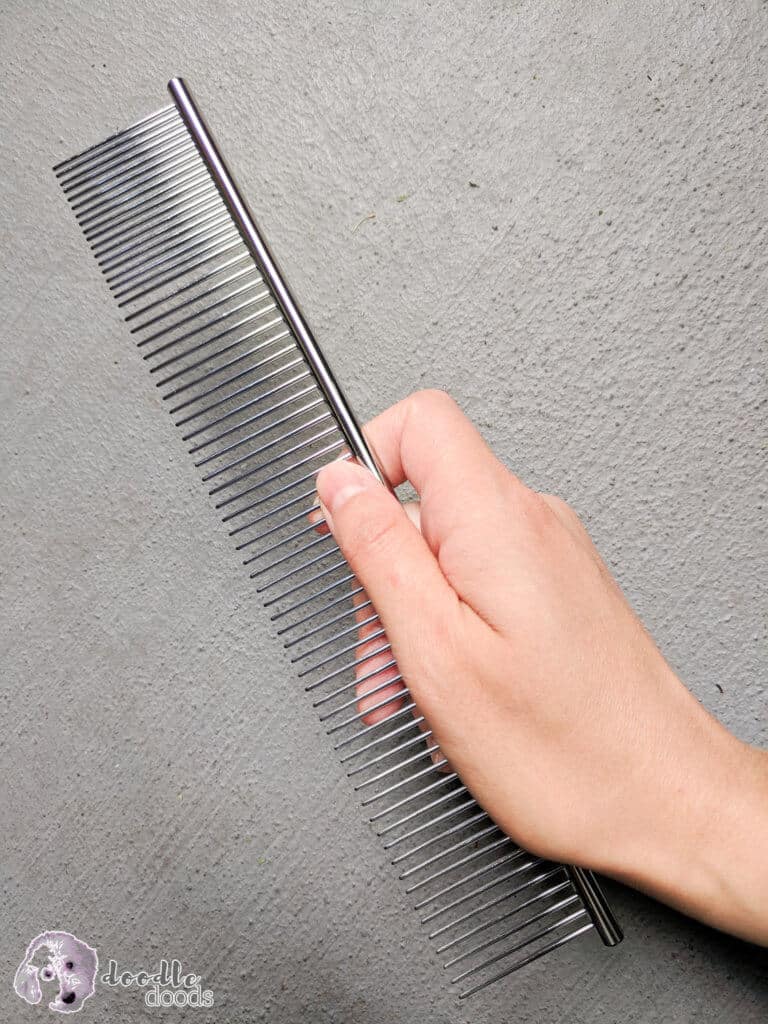
What Is The Best Brush For Huskydoodles?
When it comes to grooming your Huskydoodle, the type of brush you choose can make a huge difference in their coat quality. Different breeds have different needs when it comes to brushing and so it’s important to know what works best for your particular breed.
Like other Doodles, Huskydoodles have thick coats that require more than just a daily brush down. What’s more, not all Huskydoodles have the same coat type. It’s no surprise, as we combine two vastly different purebred dogs – the Siberian Husky and Poodle. Obviously, the outcome may lean on either side of their lineage.
The type of coat your dog has is one of the most important factors, as different brushes are designed for different types of coats. You’ll also want to consider how often you groom your dog (quality and comfort is key!), and whether or not matting is a problem.
Moreover, don’t forget to consider your dog’s size, as you want to comfortably use the brush. If the brush is too little, it’ll take way too long to brush through the whole fur. And if the brush is too big, you won’t be able to comfortably maneuver around your curvy pup.
The same goes for pin length – be sure to choose a dog brush that has pins long enough to penetrate all lengths of the hair all the way down to the root. If your Huskydoodle has shorter hair, you can opt for shorter pins, and vice versa.
Considering The Different Types of Huskydoodle Coats
As we mentioned, when choosing the best brush for Huskydoodle, it’s vital that you consider your dog’s coat type. With purebred Huskies and Poodles its fairly simple – they both come in just one coat type, making it fairly easy to predict the outcome.
Huskies are notorious shedders, as they have both the outercoat and an undercoat. These double-coated dogs heavily shed twice a year, and more throughout the whole year. Poodles, on the other hand, are well-known as hypoallergenic dogs, as they’re single-coated, and their curly coats trap in loose dog hair. This means that there’s almost no shedding at all!
But what about Huskydoodles? As you can imagine, they can inherit either the Poodle-inspired, hypoallergenic curls, or take more after their winter-loving Husky parents with straight double coats. Most of the time, however, Huskydoodles tend to inherit wavy coats that represent their hybrid heritage.
Let’s now take a closer look at why it’s important to consider your Dood’s coat type when choosing the best brush for Huskydoodle.
Curly Coat
The highly coveted curly coat is a nod to the Huskydoodle’s Poodle heritage. These pups are considered the best choice for people who suffer from allergies, as they tend to shed very little, if any at all. The downside of curly coats is that they’re also the trickiest to manage – they’re extremely prone to tangles and matting, so regular brushing is an absolute must.

What you should keep in mind with the curly coat is that it’s very thick and textured. This means that any dirt, debris, and loose dog hair will get easily trapped inside the fur. And if you don’t brush it out, mats are quick to form. For this reason, the best brush for Huskydoodles with thick coats would be one that can really work through that demanding fur, such as a heavy-duty slicker brush.
Straight Coat
Huskydoodles with straight coats inherit their coat genetics mostly from the purebred Husky parent. As you can probably guess, this also means that they tend to come with shedding undercoats. Although curly coats are generally the most prone to matting, straight coats can just as easily become matted if you don’t brush out the loose dog hair.
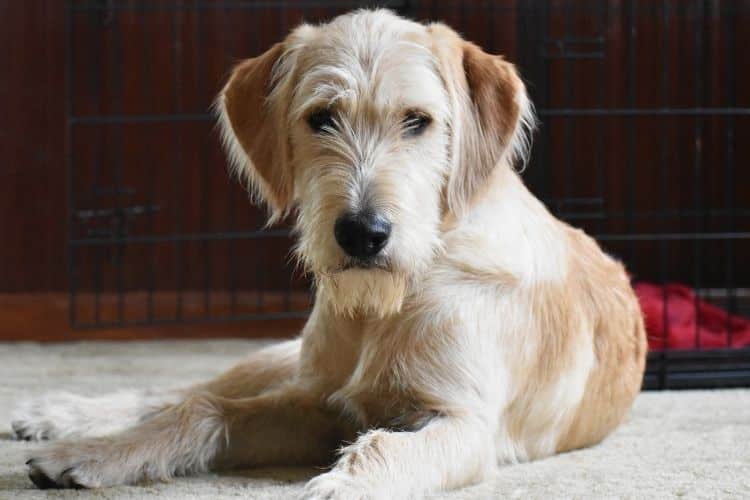
Nonetheless, straight-coated Huskydoodles do shed less than their purebred Husky parents. However, we wouldn’t recommend a straight-coated Dood for people with severe dog allergies. Since straight coats aren’t as textured as curly coats, they can benefit from both pin or slicker brushes.
Wavy Coat
Then we have the wavy coat that combines the traits of both purebred parents. Most Huskydoodles tend to inherit this coat type – after all, we are talking about a hybrid breed.
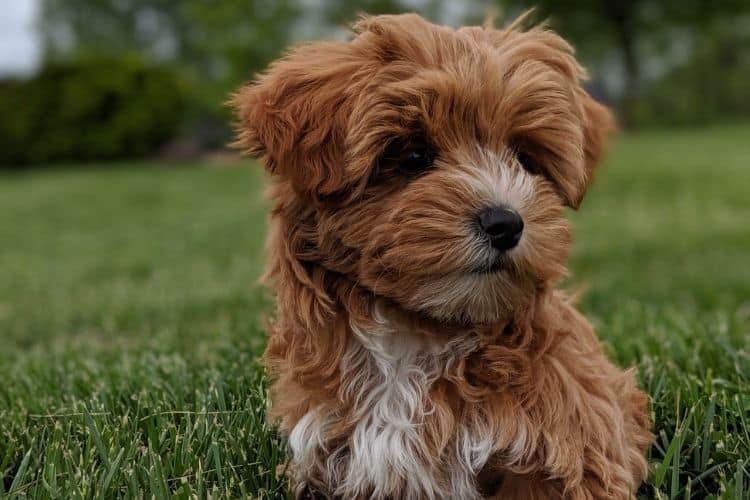
The great thing about wavy-coated Huskydoodles is that they aren’t as prone to matting as either of the other coat types. Wavy coats aren’t as textured as curly coats, meaning that they’re easier to manage and keep in great condition. Although wavy-coated Huskydoodles may inherit a shedding undercoat, they generally shed much less than straight-coated Doods. The best of both worlds, we must say! For this reason, the best brush for Huskydoodles with wavy coats would be a pin brush.
Best Brush For Huskydoodles: Reviews With Pros & Cons
Chris Christensen Big G Slicker Brush
If you’re looking for a slicker brush that’s praised by both Huskydoodle owners and pro groomers, then look no further! Chris Christensen’s Big G Slicker Brush is probably the most well-known slicker brush in the Doodle community. And for a very good reason, too. It’s a truly unique dog brush that can handle even the thickest, most high-maintenance coats that you can imagine.
The Big G Slicker Brush features a large, wide paddle with long, bended pins. The wide paddle lets you cover large areas of fur at once, while the bended pins can effectively brush through even the toughest Huskydoodle coats. It’s also made from extremely high-quality materials, making it such an investment piece that you’ll be able to use for a very, very long time. And thanks to its ergonomic handle, you’ll have no problem finishing up the whole coat in one go.
By the way, if you’re looking for the best brush for Huskydoodle puppies, then you’ll absolutely love the smallest version of this brush. It’s called Baby G, isn’t that cute!
Pros
- Available in three different sizes.
- Great for deshedding.
- Excellent for detangling.
- Manages thick and textured coats.
Cons
- Rather pricey, but the quality is well worth it.
The verdict: The Chris Christensen Big G Slicker Brush is the best brush for Huskydoodles with very thick, textured, and tangle-prone coats, such as curly-coated Doods.
Chris Christensen Oval (or Oblong) Pin Brush
Although this Chris Christensen Pin Brush might look like your regular hair brush, don’t let the looks deceive you! As you would expect from such a high-end dog grooming brand, it’s a truly remarkable pin brush that’s loved by countless Huskydoodle owners.
This pin brush gets everything done when you groom your Dood. The rounded tips easily glide through the thick Huskydoodle hair, while also providing a unique massage sensation for your little (or not so little) pal. On top of all that, it’s extremely lightweight and comfortable to use for extended periods of time.
Pros
- Available in two different pin lengths.
- Great allrounder for detangling and deshedding.
- Very gentle on the skin.
Cons
- Pin brushes usually aren’t the best choice for Jackapoos with very thick and textured coats that are prone to matting.
The verdict: The Chris Christensen Pin Brush is the best brush for Huskydoodles with wavy coats that aren’t as prone to tangles. You can also use it on your straight-coated Huskydoodle if they aren’t particularly prone to matting.
Andis Steel Greyhound Comb
To finish up this list, we have saved this Andis Steel Greyhound Comb that’s an excellent tool for any Huskydoodle. Whether you need to work on super stubborn knots or groom around the face or paws, this comb has got you covered. It even has two sides so you can use it for various purposes. And as it’s made from such high-quality and durable steel, you can probably hand it down for generations to come.
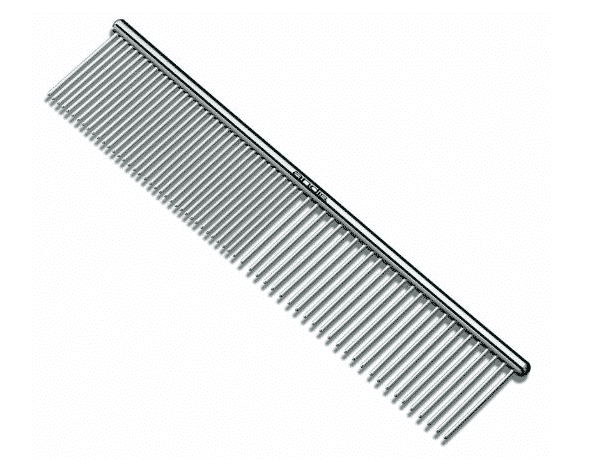
Pros
- Two sides for different purposes.
- Great for detangling.
- Excellent for more delicate areas.
- Extremely durable and long-lasting.
Cons
- None.
Best Brush For Huskydoodles: Honorable Mentions
Even though we absolutely stand by the dog brushes we mentioned above, it’s only natural if you’d like to check out some other options. There’s no shame in trying to find the best brush for your Huskydoodle, so here are some great alternatives:
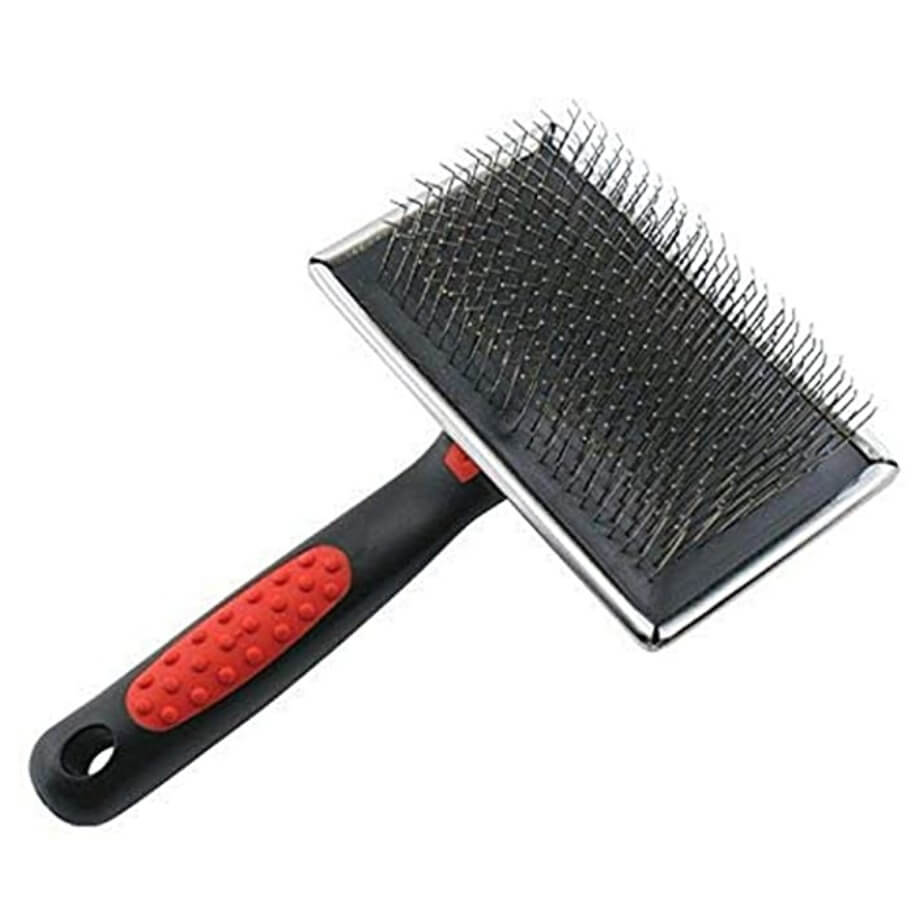

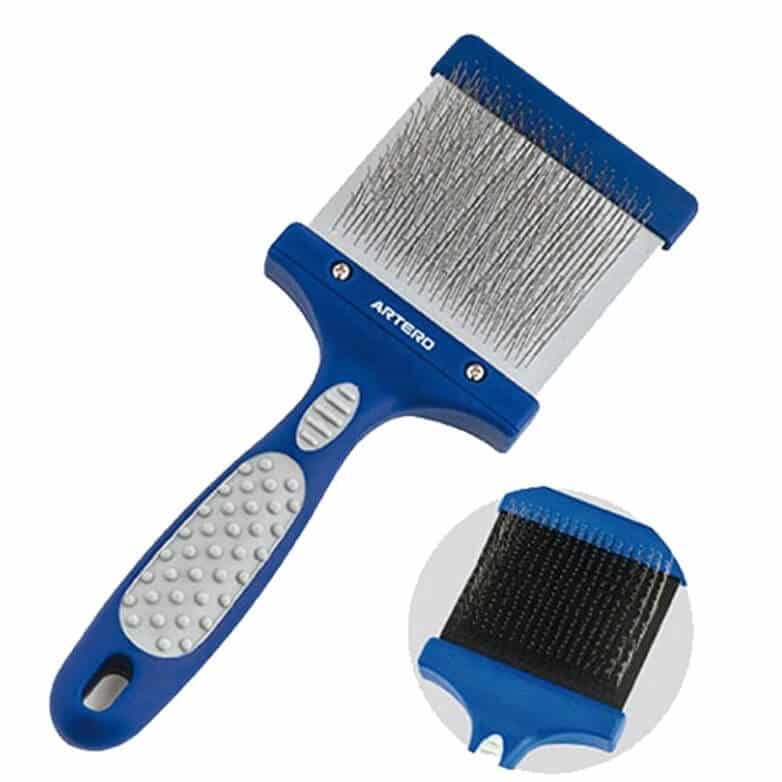
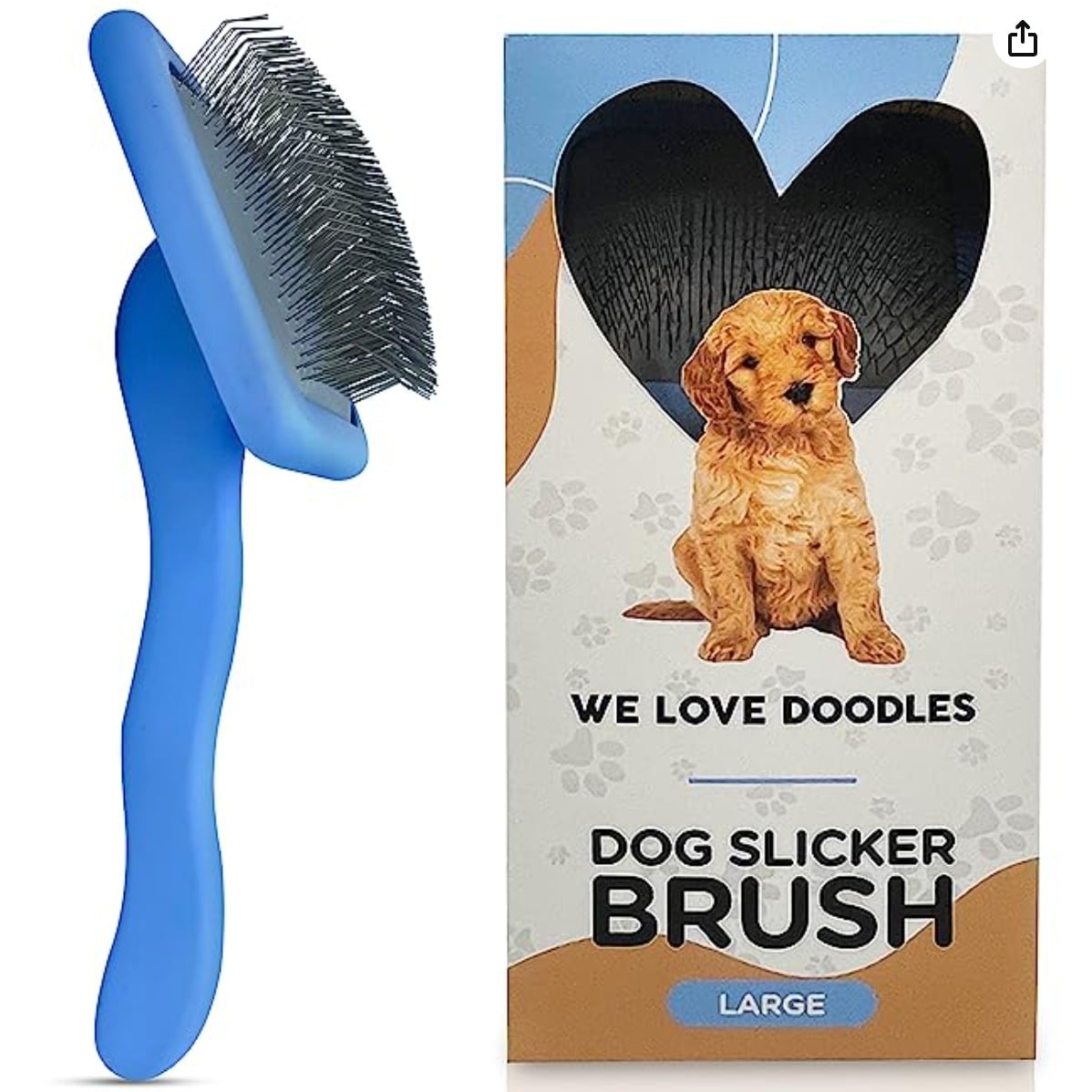
How Choosing The Correct Brush For Your Huskydoodle Can Help Prevent Matting
If you have a Huskydoodle, you know that their thick, luxurious coat is one of their best features. However, that thick coat can also be a bit of a challenge to keep healthy and mat-free. So, how do you keep Huskydoodle hair from matting? The answer is simple: choose the right brush for your pup’s coat type, and commit to regular brushing sessions.
No matter what type of coat your Huskydoodle has, it’s important to get rid of any dirt and debris that can potentially lead to mats. This is why all Dood owners should establish a regular grooming routine and invest in quality brushes that can work through their fur without pulling or hurting them – ultimately preventing matting.
To avoid matting, we recommend using slicker brushes on curly coats; pin brushes on wavy coats; and either a pin or slicker brush on straight coats. The right brush will not just help prevent matting, but also the consequent discomfort or even skin infections if matting is left untreated.
In addition to that, don’t forget to consider the overall quality of the dog brush. The best brushes for Huskydoodles have firm bristles that can reach down to the root (remember, your Dood’s hair length matters here, too!). They should also have comfortable handles that make it easy to brush your dog’s entire coat. Finally, make sure that the brush is the right size for your dog. A too-large brush can be difficult to maneuver, while a too-small brush will simply make the whole process unnecessarily time-consuming.
How Often Do You Have To Groom A Huskydoodle?
No matter what type of brush you choose, it’s important to remember that regular grooming is key in keeping your Huskydoodle looking healthy and happy. Grooming should be done a minimum of a few times a week (or more if necessary), depending on your dog’s coat type, lifestyle, and activity level.
For example, a Huskydoodle with a double coat will shed more than one with a single coat, and a dog who spends a lot of time outside is likely to need more frequent grooming than one who stays mostly indoors.
The frequency of the grooming sessions mostly depends on what type of coat your pup has. Generally speaking, curly-coated Doods need more frequent brushing than wavy or straight coats – this is because the curls can easily become knotted and matted if not brushed out properly. The more often you brush your dog, the less likely they are to develop mats!
But how often should you brush a Huskydoodle? Typically, you should brush your Huskydoodle at least 3-4 times a week. But if your pup has a curly coat, we definitely recommend daily brushing to keep tangles and mats in check. The same goes for straight-coated Huskydoodles. This will help to remove loose hair from the coat and reduce the amount of hair that ends up on your furniture or clothing.
Apart from regular brushing, it’s also essential that you give your pup baths on a regular basis. This will help get rid of dirt, oils, and dander that can clump up the fur and lead to matting. In general, Huskydoodles should have a bath once every 4 to 8 weeks (or more often if they’re swimming in bodies of water or have gotten really dirty).
If you’ve missed a few grooming sessions, you can use the line brushing technique to thoroughly brush through the coat.
How To Brush A Huskydoodle Properly
When it comes to brushing your Huskydoodle, the key is to use the correct technique and brush with care.
Before you start brushing, run your fingers through all areas of the fur. If you come across any mats or tangles, use a wide-toothed comb and work out the knots gently from the root. By the way, you can also use a dog detangler spray, it’s a true lifesaver for Doodles!
Once you’re done, you can move on to brushing with your pin or slicker brush. Start by using gentle strokes and go in the direction of fur growth so as not to pull or tug at the coat. This means that you start from the root and move towards the tip of the hair, not the other way around. Also, you should always start from the bottom of the feet and work your way up the body, finishing with the back. Below you’ll find a helpful guideline:
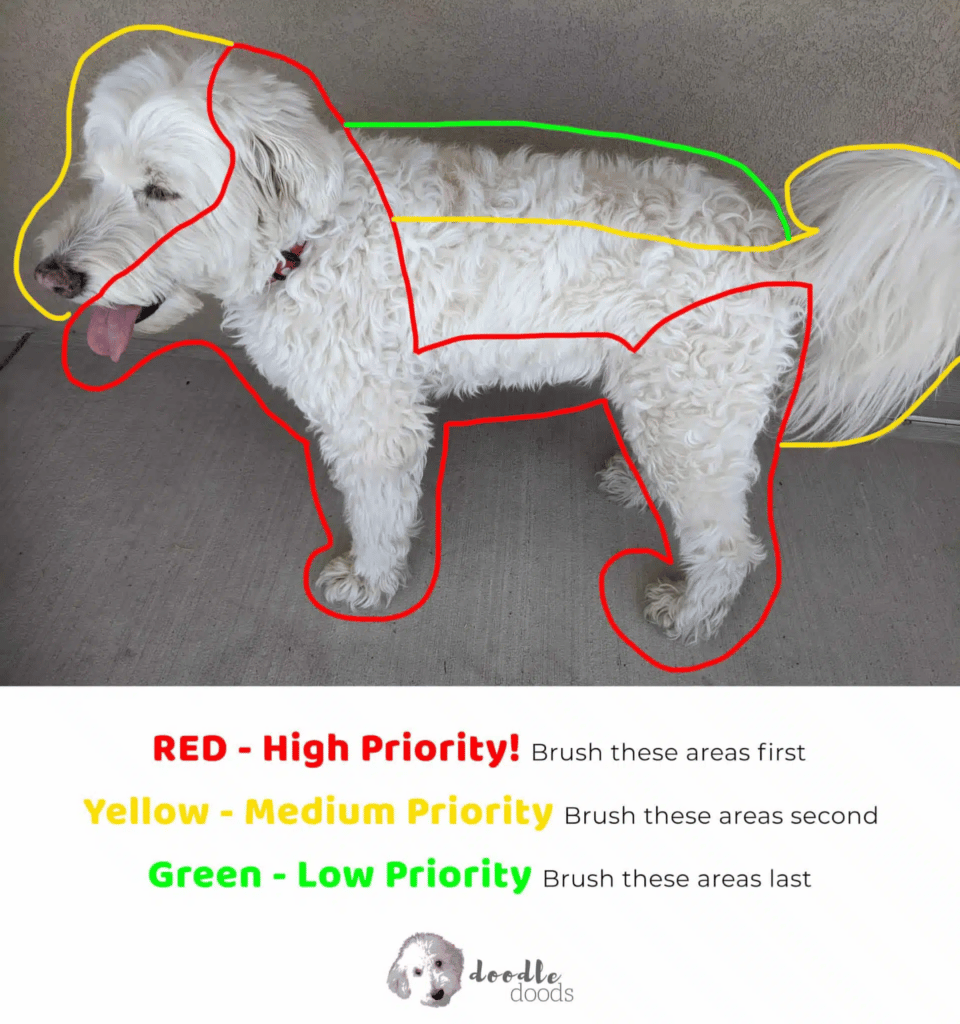
Finally, make sure that you brush all areas of their body properly; this includes their face, ears, legs, tail and any other delicate spots. Pay special attention to those especially hard-to-reach areas, since this is where mats tend to form.
It also helps if you give your pup lots of positive reinforcement throughout – talk in a calm voice and reward them with treats or other forms of affection after each session. This will help create an enjoyable experience for both of you!
Can You Over-Brush A Huskydoodle?
Although it’s justified to think so, the frequency doesn’t really do much damage to your Dood’s coat. It’s rather the opposite. However, if you’re not using the correct technique or pull on the hair, it can definitely cause more harm than good. For this reason, it’s crucial that you’re always very gentle and don’t put too much pressure on your dog’s skin. If you’re in doubt, first try to find the right pressure by using the brush on your own skin.
Best Brush For Huskydoodles: Frequently Asked Questions
When it comes to choosing the best brush for Huskydoodles, you should opt for either a slicker brush or pin brush, depending on your Dood’s coat type. For instance, if your Huskydoodle has very tangle-prone and thick hair, a slicker brush would likely be the best option. If your Huskydoodle’s hair doesn’t get as easily knotted, you could opt for a pin brush instead. In addition to a brush, you’ll also need a good, sturdy metal comb to use on smaller and more delicate areas, and also to work through individual knots before you start brushing.
The best way to make your Huskydoodle fluffy is by following a regular grooming routine. This includes daily brushing, regular haircuts, and bathing. On top of that, you can use a dog blow-dryer to fluff up the hair after each wash, and use your metal comb to fluff up the hair after you’ve finished grooming them.
The technique itself is very similar to brushing a full-grown Huskydoodle. Of course, you should use a much smaller brush and apply much less pressure, as puppies have extremely delicate skin. Make sure you move slowly, allowing your pup plenty of time to adjust and get used to the brushing sensation. A great tip is to let your puppy inspect and sniff the grooming tools beforehand, so they won’t get scared when you start using them.
Best Brush For Huskydoodles: Final Thoughts
The bottom line is, investing in the right brush for your Huskydoodle and grooming them regularly will help ensure their coat is healthy and free of mats. By using the correct brush, you’ll be even able to minimize shedding. Choosing the best brush for Huskydoodle depends on their particular coat type. For each one of these types there are different tools recommended that should be used for grooming purposes.
Take some time to research the dog brushes available that are suited to your pup’s coat type, and commit to brushing them every day or at least several times a week. The dog brushes we listed in this guide are all designed to address the unique needs of Huskydoodles and can help keep their coat looking healthy and glossy. With the right brush and a regular grooming routine, you’ll have your pup looking like a show dog in no time!
Learn How to Stop Shavedowns For Good & Keep Matting At Bay!
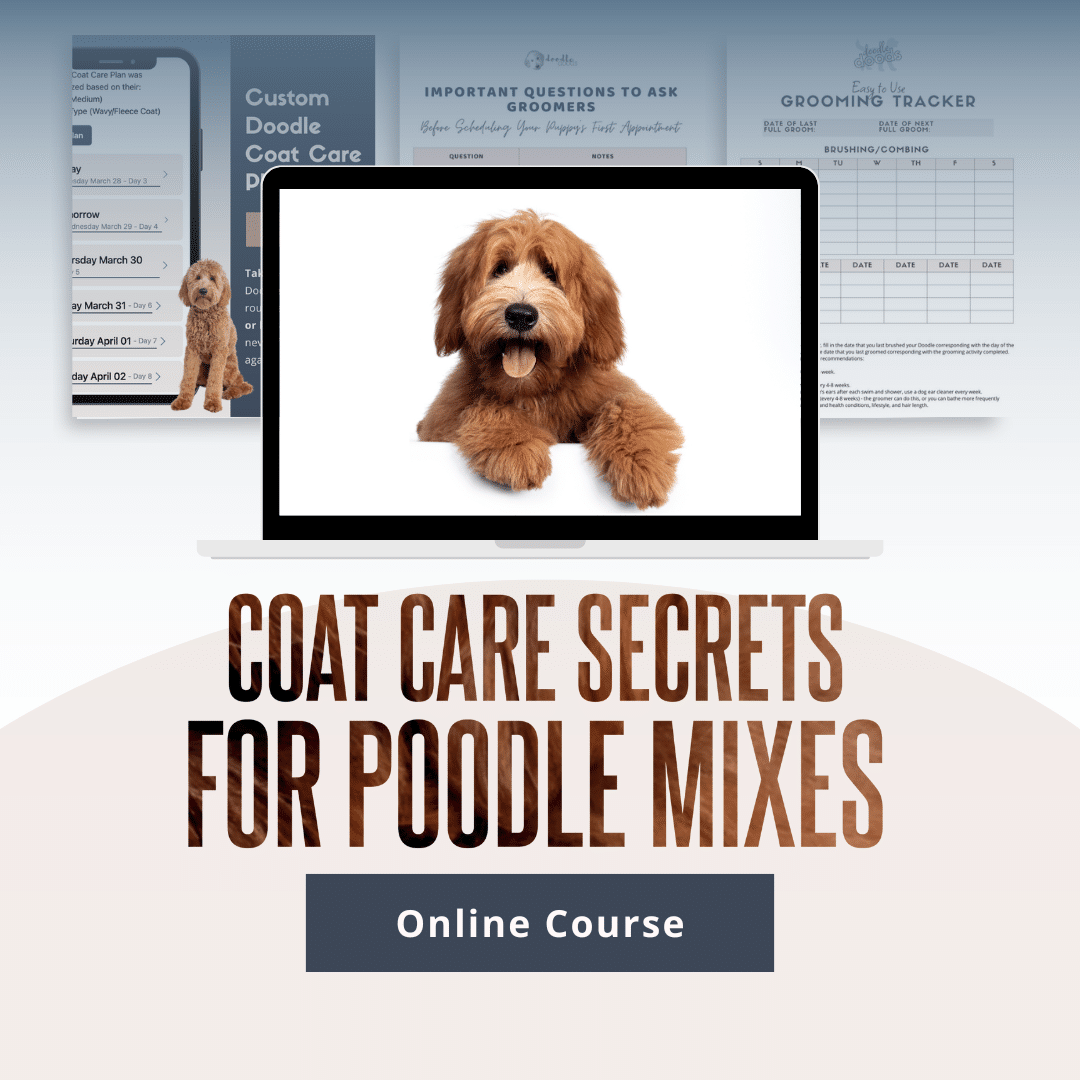
Discover the PROPER Doodle coat care routine that gets your pup to cooperate…helps you nip tangles in the bud…and gets groomers to do exactly what you want.
Plus, get $520 worth of Bonus Materials for FREE, including:- Doodle Parenthood Community and Support Group ($190 value)
- Custom Doodle Coat Care Plan Lifetime Access ($75 value)
- Easy to Use Doodle Grooming Tracker ($20 value)
- And MORE!

